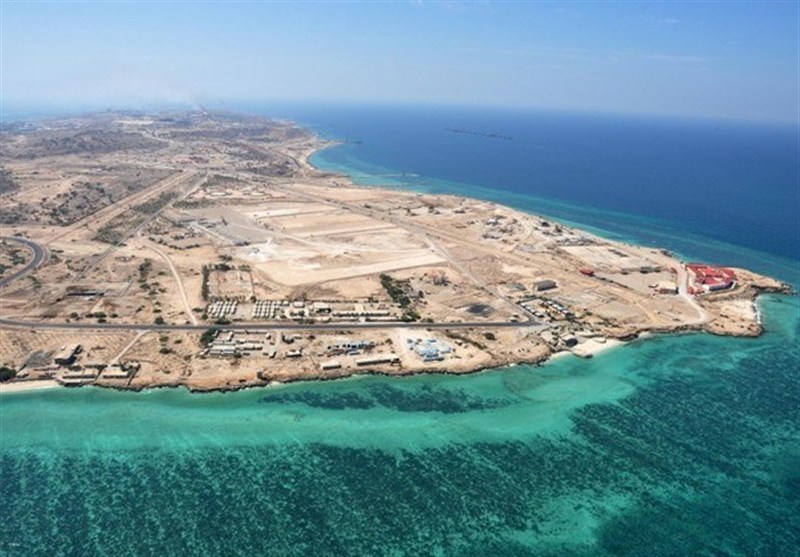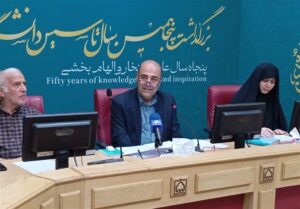Maritime and coastal tourism is now one of the global pillars of the global economy, according to the Tasnim News Agency’s social correspondent. For example, in 2019, tourism on the Pacific Island added to about $ 142 billion for the local economy, and today we see that many of their livelihoods depend on the sea, beaches, aquaculture and the marine environment. Also in the Caribbean, maritime tourism and coastal tourists have played a major contribution to GDP and foreign exchange earnings.
Worldwide, coastal and maritime tourism constitutes about half of the world’s whole tourism, and adherence to environmental standards can be the difference between sustainability and destruction. For example, in recent years, reports have shown that coastal and maritime tourism has generated about $ 1.5 trillion in direct revenue and employment for 52 million people in the world; The sector also provides significant taxes for governments.
But the industry’s progress is not challenging. High pressure on coastal ecosystems such as coral reefs, beaches, mangrove plants, marine habitats can lead to coastal erosion, turbidity, plastic pollution, destruction of sensitive species habitat, reduced biodiversity, and even crises such as coral whiteness. For example, plastic pollution in many coastal areas imposes heavy costs on the tourism industry, so that in the Pacific region, the damage caused by seafood to the tourism sector has been millions of dollars.
However, marine tourism is like a double -edged razor: If properly planned, it can be a huge source of income for environmental protection and ecosystems reconstruction. Business revenues can provide coastal protection costs, creation of marine protected areas, monitoring disruptive activities, waste management and sustainable aquaculture. For example, a study shows that coral reefs are more than $ 150 billion in economic value through their services to tourism, fisheries, coastal protection and the like; The preservation of them has made this profit.
In addition, the countries and coastal communities that have created marine protected areas have usually seen an increase in the number of nature -interested visitors, improved ecosystems (eg, recovering fish or corals) and improving water quality, which enhances tourism attractiveness.
Conversation with this subject. Dr. Shahram Fadakar, Director General of the Bureau of Environmental Protection and Sea Bureau We were reading the details below.
Tasnim: To what extent do you think maritime tourism can help the country’s income and money and to create jobs for local communities?
It is an undeniable issue that maritime tourism is essentially one of the most powerful branches of tourism in the world, especially for countries with seashore. The World Tourism Organization (WTO) has put forward four basic criteria for motivating people’s travel; Interestingly, out of these four criteria, three are directly linked to the sea and the beach.
The organization emphasizes that the sun, sand and sea are the most important reasons for people to travel to tourism destinations. The same fact shows that the share of maritime tourism in the whole tourism industry is very striking; Because a large part of the trips are due to coastal and sea attractions.
In the meantime, countries that have given special importance to this issue have shown successful examples of maritime tourism development. Spain, for example, attracts about 40 million tourists a year, owes a huge share of these statistics to its beaches and islands; Islands like Canary are world -renowned and attract most of the tourists to the country. Türkiye is another example of about 20 million annual tourists focusing on its seafood.
The country is connected to the Black Sea from the north to the Mediterranean and the Marmara Sea from the north, and this geographical location has provided a wide range of tourism. The United Arab Emirates, whose development is fully based on maritime and coastal capacities, also shows how countries in the region have been able to exploit this opportunity. These successful examples prove that maritime tourism is fully feasible and can be a model for countries such as Iran. However, this route is empty but and if not.
The tourism industry’s employment capacity is 5 times the other industries
Although tourism, like any other industry, can pose threats to the environment, it has fewer destructive effects than many other coasts, while at the same time, it has more durability and consistency. Studies show that there are 25 job opportunities per investment unit in the tourism industry; In other industries, however, this number is much lower and about 5 job opportunities per unit investment.
Another advantage is that the more the industry is developed, the more income and the attraction of enthusiasts increases, and as a result, the return on capital will be more lasting and longer. For this reason, maritime tourism is not only a theoretical phenomenon, but it is also a well -studied knowledge, and has been successfully operational in many countries.
Tasnim: Do we have a law in the country that is required to spend on tourism revenue in reconstruction, restoration or environmental protection?
According to the laws of the country, it is decided that the revenue from tourism and in general any development in the environment -related areas will be spent. In the laws of maritime -based development policies, as well as in the Seventh Development Program, there are specific legal materials that require the government to allocate part of the revenue from various sectors, including VAT.
These resources should be spent on eliminating environmental pollution, protection and improvement of marine ecosystem. For example, in the maritime -based development policies, it is clear that the green effects of economic activities should be spent to relieve damage or protect the environment.
Tourist Tourists’ Tournament on valuable coral habitats
In the meantime, the status of the country’s coral habitats is very sensitive. Almost all of Iran’s islands in the southern waters have coral habitats, and there are only a few habitats on the land coast. However, in recent years, these valuable resources have been unjustified by tourists, and there has been virtually no serious and effective oversight of the activities.
Trustees must play their role; To monitor, to set a specific criteria and guidelines for companies and organizations that are active in this field and have accurate control over their implementation. Because in the event of the destruction of coral habitats, the tourism capacity will be fundamentally eliminated.
For example, Kish Island owes much of its charm to the transparency of white water and white sand that the corals have given it. Now if the corals disappear, this transparency and beauty will be lost, and therefore there will be no desirability for tourists. The same is true of other popular islands and beaches.
According to the general principles, a specific guideline and framework must be formulated for any activity, whether industrial, commercial or services that affect the environment. But in the field of tourism, our performance has been very poor. There are many reasons for this weakness: disregard, lack of necessary investigations, and neglect of strengthening this area. Unfortunately our look at tourism restricted to constructing hotel or increasing travel statistics; While in advanced countries, the look is quite different.
For example, in Australia, any tourist who intends to be on the coast or use of marine recreational activities such as diving is required to observe environmental guidelines. All diving clubs and companies provide environmental training and environmental requirements before tourists to the underwater, and the government oversees their accurate implementation.
From this point of view, it should be said that maritime tourism in Iran is faced with an neglected image; The neglect that the consequences of today is clearly being revealed.
Native birds of Shidovar Island, Cat Food Tourists
For example، On the island of Shidovar, we face completely special conditions. The island is not only a wildlife sanctuary, but also the title of the International Wetland and the Biography Reserve. Despite such an important position, some companies are transferring tourists to the island, without a specific control. The total area of Shidovar is only about 260 hectares; A very limited, fragile and sensitive capacity that has no endurance of human pressure.
The main reason for banning the widespread presence of humans in the area is its importance as one of the most important bird habitats. Almost the whole of the island is covered with bird eggs. The unnecessary arrival of tourists and even the release of non -native species such as cats has made the ecosystem a serious threat. Cats, who do not have a natural food source on the island, have turned to bird eggs and due to lack of natural competitors, their population grows at an explosive speed. Such a process actually means destroying a complete ecosystem.
Tasnim: Did the Environment Agency take action to prevent this process from continuing?
The island is about 30 to 40 kilometers from the mainland near Lavan Island. It is about 300 kilometers to the center of Hormozgan province. The climatic conditions and the lack of basic facilities such as freshwater and infrastructure have almost made the presence of environmental forces permanently impossible. Although environmental agents sometimes do periodic rebellion, the pressure of tourist demand and widespread advertising, especially on social networks and by some illegal companies, has made it difficult to control the situation.
Tasnim: But on the environmental effects of marine tourism; What are the consequences of this industry?
For example, when millions of people rush to the northern coasts of the country, consequences such as mass production of waste and sewage, destruction of vegetation and forests, noise pollution and increased air pollution occur in a short period of time. There is a similar trend in the south of the country. If you were on the beaches 15 to 20 years ago, you could see the shells and shells on the coastline; But now these resources are almost disappeared. However, these natural remnants play an important role in the deposition and formation of coastal sand and elimination will have serious consequences for the future of the coast.
In addition, recreational hunting, the use of diving guns, the unpredictable presence of tourists in mangrove forests, or accelerated infrastructure construction such as hotel, docks, ports and sewage treatment plants, all have widespread consequences on sensitive coastal and marine environments. Although infrastructure is essential to attract tourists, hasty decisions without environmental studies have devastating results. For example, the port of Hondurabi was built right on the coral habitat. Or on the island of Lark, as well as the Hara Protected Area in Qeshm, buildings were made that destroyed coral and coastal ecosystems.
The tourist only travels to an area when it is eligible for a spectacular environment. If these conditions are destroyed, there will be no motivation for tourists. Therefore, all maritime tourism pressure is applied to sensitive coastal ecosystems. If these beaches are deprived of beauty and charm, naturally no tourist will be willing. For example, if the forests are destroyed, areas such as drums or lafts will have nothing to show to tourists.
In fact, the industry acts as a double -edged razor; On the one hand, it can help the environment, and on the other hand, due to the short -term opportunities it creates, it will cause serious problems if the criteria and criteria of sustainable development are not met.
Tasnim: What did the Environmental Protection Agency do to prevent the destruction of the ecosystem of the seas and coasts while providing revenue from regulated tourism?
In order to have accurate capacity assessment on the coast, the Environment Agency was obliged to evaluate the ecological power of the areas in accordance with the legal duty set forth in Article 24 of the Development Policies. The goal was to identify their habitats and capacities and to introduce priorities, especially in the field of maritime tourism. Accordingly, the entire Makran coastal area was zoned and evaluated. Part of the area was previously studied, but in recent research, both new data and the scope of studies were developed. The result was that about 57,000 hectares were identified as talented areas that are capable of exploiting tourism. In addition, 14 districts were also specifically introduced for tourism activities.
This is a response to the growing demand for maritime tourism and helps to know where and how to attend the industry and its trustees and to take advantage of opportunities. Of course, there are other programs for other beaches. Along the way, a beautiful atlas are made from the marine areas that are now used as a valuable source.
Tourists need to be aware of the characteristics and attractions of that area before entering any destination; What is the difference with other points and what a unique perspective offers. Many of the areas we have on the coast of our country are not found in other parts of the world, and this has provided a very valuable opportunity for the development of Iranian maritime tourism.
End of message/
منبع:تسنیم







